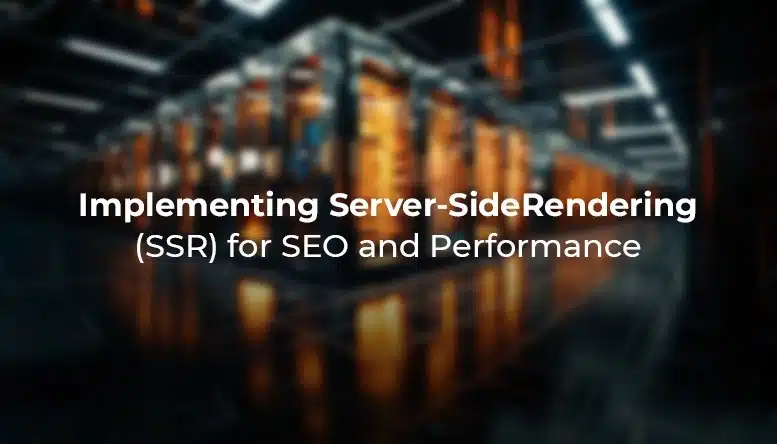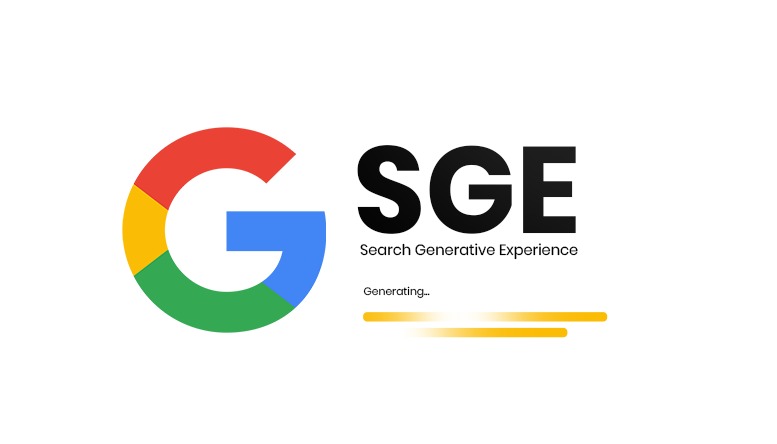Implementing Server-Side Rendering (SSR) for SEO and Performance
- October 30, 2024
- Post By: ABDUL BASITH

In today’s world where online users’ attention span is decreasing day by day, page loading times and SEO performance are critical. Consumers expect smooth interactions, personalized content, and rapid responses. Visitors will probably leave if your website doesn’t operate up to par, which will affect your engagement, reputation, and financial results. Server-side rendering has gained popularity in recent times. Web pages are pre-rendered on the server before they reach users. It’s something in high demand due to speed and relevancy demands. SSR makes it possible for fast loading, good SEO, and an excellent user experience. To make it more clear, let’s talk about ‘Implementing Server-Side Rendering (SSR) for SEO and Performance
SSR vs. CSR
Now, it is important to know the key difference between SSR and more recent CSR since it dominated the last ten years. CSR loads pages fully within the browser and is often linked with popular JavaScript frameworks like React, Vue, and Angular. Since the actual content is rendered the very next moment after executing the browser’s JavaScript, CSR has negative implications in terms of SEO and first page load even though it offers developers more flexibility as they design SPAs.
In contrast, SSR sends the client fully rendered HTML after pre-rendering pages on the server. This technique reduces the time visitors spend waiting for material to appear as pages are already pre-populated with information. In addition, websites that are rendered on the server are easy to index by search engines, thereby improving organic reach and ranking in search engines.
How Server-Side Rendering Improves SEO
One of the most significant impacts of SSR is on SEO. Although search engines like Google could crawl information rendered in JavaScript, HTML-rendered websites are favored by these due to their ease of processing and speed.
Improved Crawling and Indexing
Other advantages arise from such a strategy, which include high ranks and good indexing, since the crawler will easily recognize the keywords, links, and structure data. Such an HTML-first strategy increases engagement while reducing bounce rates.
Pages that load fast continue to retain visitors and avoid bounce rates. SSR creates a good impression and encourages readers to spend more time on the page because it greatly reduces waiting time for information loads. The engagement indicators of users are what search engines evaluate when ranking a given page.
Meta tags and structured data
SSR enables the addition of meta tags and structured data at the server level to ensure that search engines extract valuable information pertaining to the content of pages, authors, and schema. This methodological process thus facilitates better categorization by the search engines, hence bringing in more users for discovery purposes.
Improving Performance with SSR
SSR excels in performance, which is still one of the main factors in online development, through lessened load times and general improvement of the responsiveness of web applications. The following are some of the ways SSR enhances web performance:
Site Loading Speed
SSR would immediately be able to provide full pages to consumers directly without waiting for the paginated content. This would be of great benefit to users on slow connections or mobile networks as their connections could have the likelihood to introduce significant delay during client-side rendering.
Better Rendering
This means that the amount of JavaScript and DOM manipulation is reduced. The amount of load required to be executed on a client’s device decreases. Smooth rendering with lesser strain upon a client’s browser directly contributes to better user experiences. This optimized rendering would come in very handy where clients are using low power devices.
Adaptive Rendering
Because the adaptive rendering techniques can be a part of SSR frameworks, it is possible to make best-available versions of the content available depending on the device type, screen size, or even network conditions through applications.
SSR is made possible to load faster on mobile devices because it customizes the experience; this is very important with increasing mobile surfing.
Next.js and Nuxt.js-SSR Frameworks for Modern Applications
The new fashionable options that have arisen are frameworks such as Next.js and Nuxt.js. Developers are giving more emphasis to SSR because of SEO and performance advantages. Based on React and Vue.js, respectively, these frameworks provide out-of-the-box SSR features, which help streamline the SSR procedure and let developers create apps that are fast and search engine friendly.
Next.js: Bringing SSR to React Applications
One of the reasons why the Next.js framework from Vercel is widely acclaimed is because of its perfect interaction with React in SSR. Here’s why it is perfectly suitable for SSR, followed by its idealities as an app-building framework to make apps scalable and of minimum setup:
– Automate code splitting and static optimization.
Automatic static optimization is exclusive to Next.js and allows pages to be served as static assets where possible. The blend of SSR and static rendering improves the performance of websites but preserves SEO benefits.
– Rendering Options
Next.js has the hybrid rendering strategy through which the developer chooses per page between Server Side Rendering, Static Site Generation, and CSR. Here again, it balances things, so on-the-fly updates only that is essential in performance is not changed.
– They have natural SEO support built-in within the framework.
This feature is the built-in metadata manager, structured data manager, and canonical links manager Next.js uses to ensure that sites are search-engine friendly without needing third-party plugins.
Also read
Nuxt.js Powers Vue with SSR.
Nuxt.js adds SSR support to Vue.js and is, therefore, the go-to choice for Vue developers looking for a combination of SEO and performance improvements. Features that should make development easier merge the power of Vue with SSR:
Modular Architecture.
Nuxt has modular installation, so you install only what you need. That way, sizes of applications are reduced, and loads are optimized. Plugins and APIs are also supported, so it’s used for all types of projects.
Integrated static site generation (SSG).
Like Next.js, Nuxt.js lets developers take full advantage of static generation for sites that don’t need constantly to be updated just like SSR matches SSG’s speed and reliability with SEO.
Meta management and route preloading.
Nuxt.js can easily add dynamic meta tags to each route, thereby ensuring that every page is properly indexed with the relevant metadata. Preloading of routes also enhances navigation as the time spent by the visitors between page transitions gets shorter.
Is SSR always the best answer?
Yes, SSR offers great benefits to SEO and performance, but no, it is not always the best answer. SSR could also increase the cost of the servers since pages are rendered on demand, hence leading to server load. This method can be costly for sites that have high traffic and may face problems of scalability. Additionally, SSR is difficult to implement in web applications that require continual updates of data or complex client-side interactions. In cases where SSR is neither practicable nor required, then SSG or CSR might be the better choice. SSR: A Long-Term Strategy
SSR as a Long-Term Strategy
Server-Side Rendering is more than a technological advancement; it is actually a strategic choice that converges performance, user experience, and SEO into a single framework. Although there may be projects this technology is not for, SSR is an inevitable solution for applications that involve speed, SEO, and user interaction. Coming together to combine the strengths of client-side interactions as well as server-rendered content, SSR is a method that can be considered an antidote to future requirements and capable of providing the needed flexibility in an evolving world of user demands.
Get A Call back from Our Expert
Need tailored guidance or have specific questions? Simply request a callback, and one of our knowledgeable experts will reach out to you at a time that suits your schedule.
Marketing
Services





